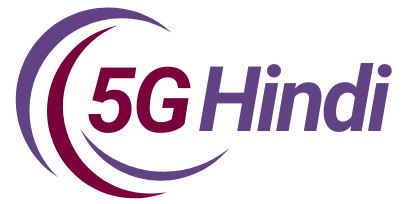Artificial intelligence (AI) is rapidly changing how we live and work, and its influence on education is becoming increasingly profound. From personalized learning experiences to automated grading systems, AI presents exciting opportunities to enhance the educational landscape. But this shift also brings challenges that we must address thoughtfully. This article explores the impact of AI on education, examining its potential benefits and the crucial concerns that need careful consideration as AI becomes increasingly integrated into our classrooms.
Table of Contents
Personalizing the Learning Path: AI’s Tailored Approach 🧠
One of the most exciting promises of AI in education is its ability to personalize learning. Imagine a system that adapts to each student’s individual needs, pacing, and learning style. This is no longer a distant dream, thanks to advancements in AI.
How AI-Powered Personalization Works
AI algorithms analyze student data – their strengths, weaknesses, learning patterns, and preferences – to tailor educational content. This could mean providing additional support where a student struggles, offering more advanced material to those who excel, and delivering content in formats that best suit their learning styles, like videos, interactive simulations, or text-based materials. This level of personalization goes beyond what traditional teaching methods can easily achieve, offering the potential to engage students more effectively.
The Potential Benefits of Personalized AI Learning
- Enhanced Engagement: By catering to individual interests and needs, AI can increase student engagement and motivation.
- Improved Outcomes: Tailored learning leads to a deeper understanding of the subject matter and better academic performance.
- Flexibility and Adaptability: Students can learn at their own pace, revisiting concepts they struggle with, and advancing more quickly through areas they grasp easily.
- Support for Diverse Learners: AI can help address the needs of students with diverse learning abilities, creating a more inclusive learning environment.
AI as the Ultimate Teaching Assistant: Revolutionizing Instruction 🧑🏫
Beyond personalized learning, AI offers powerful tools that can assist educators in various aspects of instruction, streamlining processes and enhancing efficiency. Two key areas where AI is making a significant impact are grading and tutoring.
AI-Driven Grading Tools: Efficiency and Accuracy
Grading can be a time-consuming and often tedious task for educators. AI-powered grading tools are emerging as valuable solutions, automating the assessment process and freeing up teachers’ time to focus on lesson planning, curriculum development, and direct student interaction. These tools use machine learning to analyze student work, providing objective scoring and feedback.
- Time Savings: AI can quickly evaluate assignments, saving teachers valuable time.
- Consistent Evaluation: Algorithms provide consistent grading, eliminating the potential for human bias.
- Detailed Feedback: Some AI grading tools provide detailed feedback, helping students identify areas for improvement.
- Scalability: These systems can handle large volumes of student work, making them ideal for large classes.
It’s important to note that while these tools offer great efficiency, nuanced feedback on more subjective assignments still benefits from human input. Tools like Gradescope offer a balance of AI-assisted grading with options for human review and annotation.
Intelligent Tutoring Systems: Personalized Guidance
Intelligent Tutoring Systems (ITSs) use AI to provide personalized, one-on-one tutoring support. These systems can adapt to a student’s learning progress, offering targeted assistance and feedback. ITS can identify knowledge gaps, offer hints, provide explanations, and adapt the difficulty of the material based on a student’s performance. They often incorporate elements of gamification to keep students motivated. These systems can be beneficial in subjects where personalized attention is crucial.
- Individualized Support: AI tutors provide targeted support based on a student’s individual needs.
- Immediate Feedback: Students receive immediate responses to questions and guidance on their learning progress.
- 24/7 Availability: ITS provides learning support outside of traditional classroom hours.
- Consistent Quality: Unlike human tutors, ITS offers consistent, high-quality instruction.
Accessibility and Inclusivity: Breaking Barriers with AI
AI has immense potential to make education more accessible and inclusive for all learners, especially students with disabilities. By breaking down barriers to learning, AI can create a more equitable educational environment.
Assistive Technologies Powered by AI
AI-powered assistive technologies are transforming how students with disabilities access learning materials. These tools include:
- Screen Readers: AI algorithms enhance screen reader technology, extracting text from complex documents and converting them to audio, which is particularly useful for students who are blind or have low vision.
- Speech Recognition: Students who have difficulties with writing can utilize speech recognition software to convert their spoken words into text, enabling them to complete assignments.
- Real-Time Captions and Translations: AI generates real-time captions and translations for videos and audio, which can significantly improve access to information for students who are deaf or hard of hearing, or who have difficulty with the language of instruction.
- Personalized Text Adjustments: AI can adjust the font, size, and colors of text to improve readability, benefiting students with dyslexia or other learning challenges.
Universal Design for Learning Enhanced by AI
AI helps educators implement Universal Design for Learning (UDL) principles to create learning experiences that are accessible to all students. This means AI is used to design flexible and adaptable learning materials and teaching methods.
- Customizable Content: AI allows educators to create content in various formats that are accessible to diverse learners.
- Adaptive Learning Paths: AI-powered systems can adapt learning paths and methods to meet the needs of a diverse classroom.
- Personalized Feedback: AI can provide personalized feedback tailored to each student’s specific needs and learning styles.
Navigating the Ethical Maze: Concerns and Considerations 🤔
While AI offers numerous advantages, it’s crucial to address the ethical concerns that arise with its integration into education. We must proceed with careful thought to avoid potential pitfalls.
Data Privacy and Security
AI systems collect and analyze vast amounts of student data, raising critical questions about privacy and security. Concerns include:
- Data Collection: How and what types of student data are collected?
- Data Storage: How is this data stored and protected from unauthorized access?
- Data Usage: How is student data used and for what purpose?
- User Consent: Do parents and students have control over their data, with the ability to consent to or opt out of data collection and usage?
Implementing strict data protection measures is necessary to safeguard student privacy. This includes adhering to existing data privacy regulations, employing robust encryption techniques, and ensuring transparency in data practices.
Algorithmic Bias and Fairness
AI algorithms are trained on data, and if that data reflects existing biases, the AI systems will perpetuate these biases. This can lead to unfair or discriminatory outcomes. For example:
- Grading Systems: AI grading systems trained on biased datasets may unfairly penalize certain groups of students.
- Personalized Recommendations: If algorithms recommend learning paths based on biased historical data, this could reinforce social inequalities.
- Admissions Processes: Biases in AI systems used in admissions could result in underrepresented groups being unfairly overlooked.
To mitigate these risks, it is vital to use diverse and representative datasets for training AI systems. Regular audits of AI algorithms are needed to identify and correct any potential biases.
Transparency and Accountability
Many AI algorithms operate as “black boxes,” making it difficult to understand how they arrive at their conclusions. This lack of transparency poses challenges for both educators and students:
- Decision-Making: When an AI system makes decisions, it’s crucial to understand how it came to that decision to ensure transparency and fairness.
- Accountability: If an AI system makes a mistake, how can it be corrected, and who is responsible?
Efforts are needed to make AI algorithms more transparent and accountable. Explainable AI (XAI) aims to create systems that provide clear and understandable explanations for their actions, and is important to implement and adopt.
Shaping the Future of Learning: AI’s Evolving Role
AI in education is still in its early stages, and we can expect rapid advancements in the coming years. AI could increasingly:
- Develop Adaptive Curricula: AI will contribute to the development of curricula that automatically adapt to the changing needs of students and the evolving demands of the job market.
- Offer Advanced Simulation and Immersive Experiences: Virtual and augmented reality, powered by AI, will create immersive learning experiences that were previously unattainable.
- Support Lifelong Learning: AI-powered platforms can offer customized continuous learning opportunities for individuals throughout their lives.
- Transform Assessment: AI may revolutionize how we assess learning, moving beyond standardized tests to focus on more holistic and personalized evaluations.
- Facilitate Collaborative Learning: AI can enhance collaborative learning experiences by creating personalized group activities and facilitating communication.
The Road Ahead: Embracing Responsible AI Integration in Education 🤝
The integration of AI in education is a transformative process that requires careful planning, collaboration, and a commitment to ethical practices. To ensure that AI benefits all learners, we must take a thoughtful approach, focusing on:
- Teacher Training: Provide educators with training and resources to effectively use AI tools.
- Ethical Frameworks: Develop clear ethical guidelines for the development and use of AI in education.
- Accessibility: Ensure that all students have access to AI tools, regardless of their background or location.
- Ongoing Evaluation: Continuously evaluate the impact of AI on student learning and outcomes.
- Collaboration: Foster collaboration between researchers, educators, policymakers, and tech companies to ensure AI advancements are aligned with educational goals and ethical practices.
- Digital Literacy: Promote digital literacy for both students and teachers so they are able to use these tools effectively and responsibly.
By approaching AI implementation with careful thought and consideration of these crucial factors, we can harness its power to create more effective, inclusive, and equitable educational environments for everyone. The future of learning is indeed intertwined with AI, and the challenge for all of us now is to embrace it responsibly.

